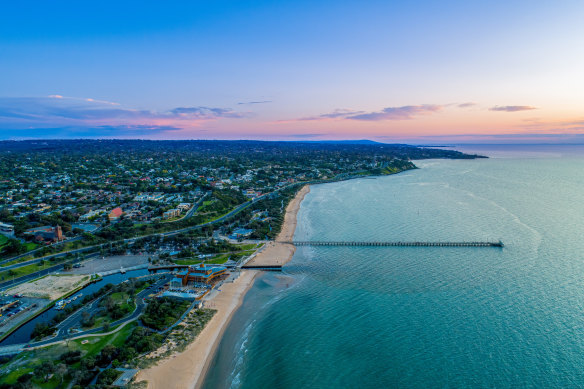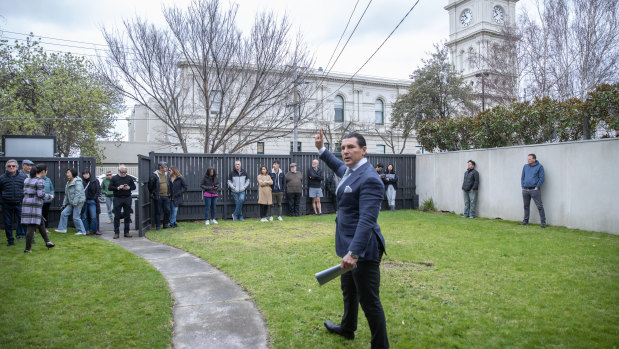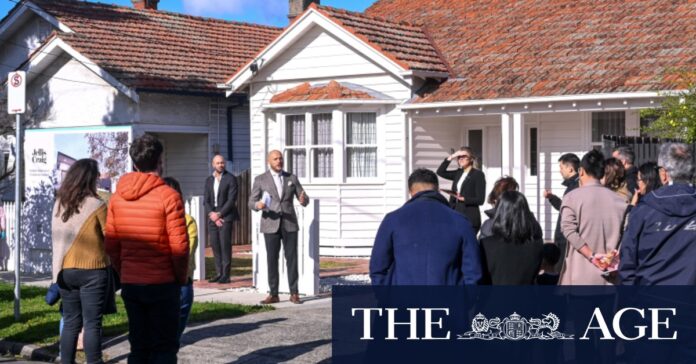[ad_1]
That included suburbs along the Mornington Peninsula such as Flinders, Tootgarook and St Andrews Beach, which had some of the biggest rises in values during the COVID property boom followed by large falls.
Loading
Eight of the 20 suburbs that had the biggest house price drops were along the peninsula, Lawless said. Most were still 14-16 per cent below their high, despite rebounding values, but were well up on pre-pandemic levels – their medians all at least 25 per cent higher than in early 2020.
While suburbs in the Mornington Peninsula were yet to regain what they lost in the downturn, agents said the market was normalising.
Peninsula Sotheby’s International Realty’s Rob Curtain said the market had returned to pre-pandemic levels.
“Like most people, we have put a line through 2020 and 2021 and are now looking at how this compares to 2019.
“It’s still been a very good year for sales.”

House prices in the Mornington Peninsula are rebounding as buyers return to the market.Credit: iStock
Curtain said that while the market had slowed since the peak, there was still good demand as buyers once locked out by higher prices had been returning to the area to look for a better deal. This had contributed to recent price gains, he said.
CBA’s head of Australian economics, Gareth Aird, said some suburbs were regaining values thanks to migrants and international students returning to Australia.
“At the heart of [price growth] has been the extraordinary growth in population,” Aird said. “Rental vacancy rates are down everywhere and that’s giving buyers the confidence to transact.”
Low vacancy rates were not only forcing up rents but were also pushing more first home buyers to get into the market, he said.

Buyer interest and prices are back on the rise in seaside suburbs like Brighton.Credit: Simon Schluter
“It’s surprising the rate at which prices rebounded … as affordability has deteriorated and borrowing capacity is down 30 per cent [based on interest rate rises],” Aird said. “So it’s not intuitive that prices have rebounded the way they have.”
CBA, like all the big four banks, is predicting Melbourne’s house prices will rise in 2024, and 2025 if interest rates are cut at the end of this year.
Jellis Craig Chelsea’s Tanja Neven-Jones said buyers had been returning to the seaside suburb, as it offered an opportunity for first home buyers to get in, and locals to upgrade.
Loading
The current median house value for the suburb is $1,148,037. While buyers were keen, there were fewer homes for sale, and Neven-Jones said demand was far outstripping supply.
“Buyers have been coming back in absolute droves,” she said.
“Chelsea is now being seen as a liveable and vibrant suburb, and no longer just an area for retirees or renters.”
While supply was low, Neven-Jones expected more stock to come onto the market, as some homeowners who bought at the peak were now finding it difficult to make ends meet after 13 interest rate rises.
“More houses will come to the market in the first quarter of [this] year, but in saying that, we’ve certainly got the buyers to snap these properties up.“
[ad_2]
Source link


